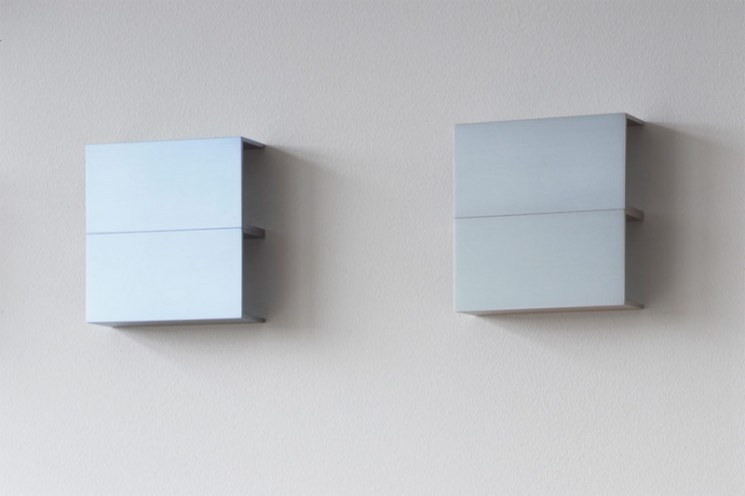Tadaaki Kuwayama
Untitled – Repetition of two colors

“Neither ideas nor thoughts, philosophy, reasons, opinions, or the artist‘s human nature have a place in my work. There is only art itself. That is all.“
The Japanese artist Tadaaki Kuwayama (born 1932) studied painting at the Tokyo National University of Art before settling within the circles of the Minimal Art movement in New York in the 1960’s. In 1966, Kuwayama participated in the influential seminal exhibition Systematic Painting at the Solomon R. Guggenheim Museum in New York.
Combining Eastern and Western elements Kuwayama creates paintings that are defined by reduced colours and minimalistic compositions. In the 1970s, Kuwayama began to move from painting to sculpturing and to focus on modular works and installations in particular. The idea of objectification and standardization led him to examine industrial production processes and materials like synthetics, glass, and aluminium. Essential to his work is a radiant, reflective surface that alternates between two nuances of colour. With the consistent and repetitive alignment of modular units Kuwayama takes on the idea of endless expansion as well as timelessness. Ultimately, he wants to create an absolute space.
Kuwayama received many awards including Art in America’s New Talent Award (1964), the National Endowment for the Arts (1969), and the Adolph and Esther Gottlieb Foundation Award (1986). His work is shown worldwide, and presented in such collections as the “Folkwang Museum” in Essen, the National Museum of Art in Osaka and the “Rupertinum Museum” in Salzburg.
The piece of work he created in 1998 is composed of 8 modules, each measuring 19.5 x 19.5 cm and installed at eye level. The work is to be perceived as a wall installation consisting of the modules as well as the space between each one.
From a frontal viewpoint the installation is dominated by the modules’ alignment in a pattern that rhythmically alternates between two colours, as it is indicated by the subtitle „Repetition of two colors.“ A small, fine line further separates each module into two parts. The work captivates by its metallic shimmer and the finely nuanced colour of the anodized aluminum.
One key aspect of Kuwayama’s artistic concept is the repetitive installation of identically shaped objects. By applying this concept he achieves maximum homogeneity in his work, which takes up the idea of infinitive space. Donald Judd had already emphasized seriality in his works, but the main difference between Kuwayama’s work and Minimal Art is that the entire space, rather than the form itself, constitutes the main focus.
Kuwayama wants to create the absolute space, which is characterized by the ideal balance between emptiness and abundance, the ideal space for the viewer‘s imagination, „I want the work to send a shiver up your spine. It should have no “hook” for viewers to cling to. I want to make people feel like they’ve entered a world beyond “art.”